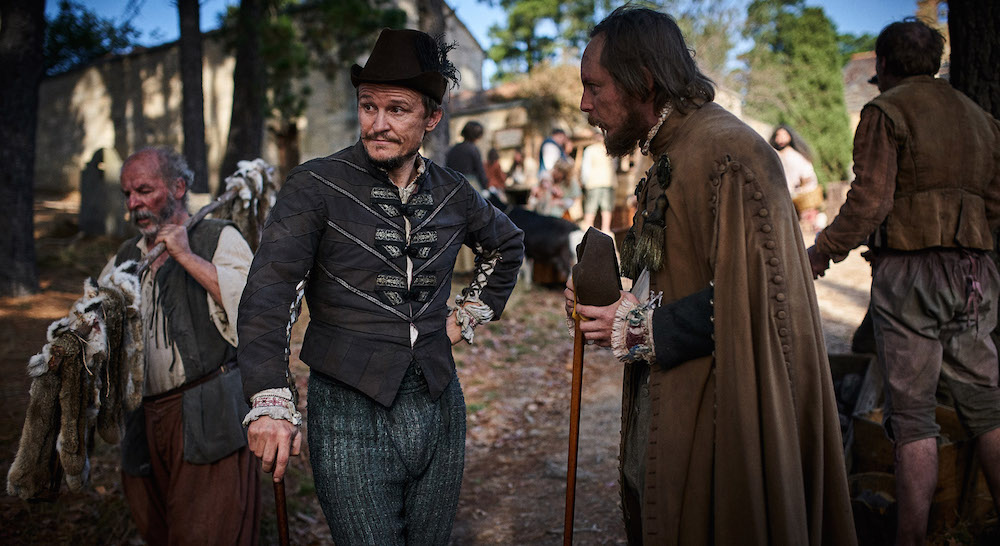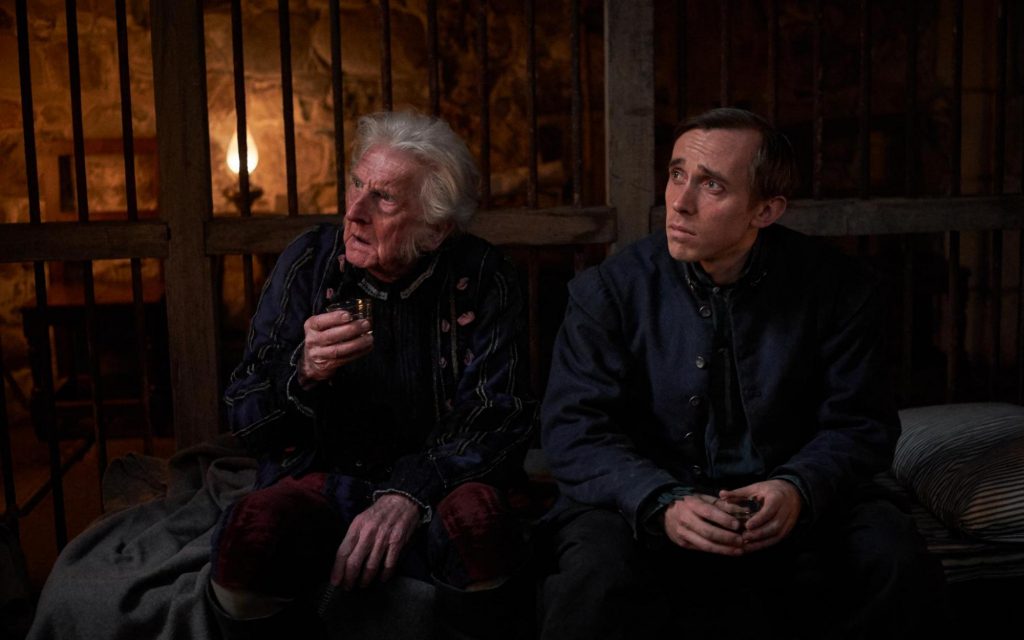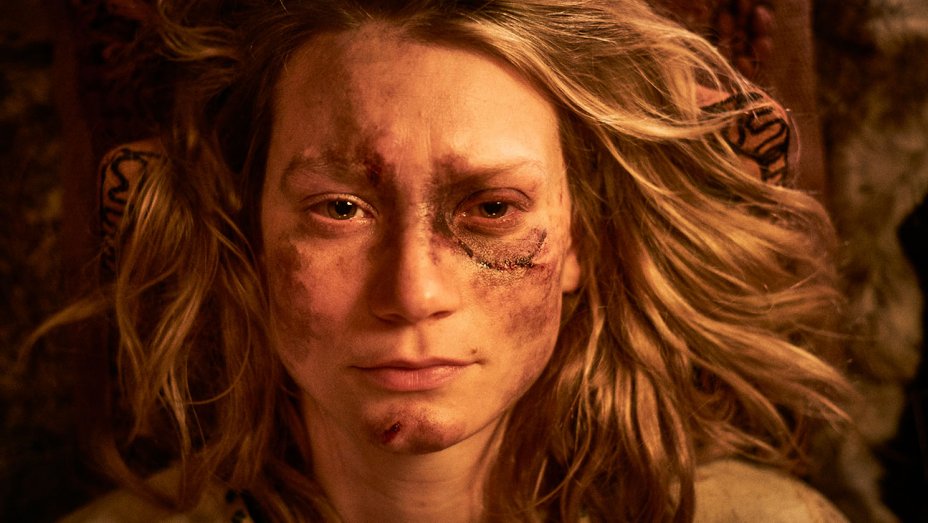British journalist Krishnan Guru-Murthy became one of the most ridiculed interviewers of the decade when he pushed director Quentin Tarantino on the relationship between the violence in his films and the violence in real life. Tarantino, with some questionable words, ‘shuts Krishnan’s butt down’ by rejecting the question, and in turn, rejecting the dialogue about the relationship between violence for entertainment and violence in reality. He adds that he has said all that he has to say about it, and sure, he has said a fair bit about it, but the reverberation from that interview still carries the vibe that Tarantino is done with talking about violence.
I’m being awfully selective in starting a decidedly non-Tarantino-esque film with a mention of this interview, and I’m doing so because it highlights one of the enduring conversations that comes with discussions about entertainment in all its permutations: does what we read, watch, or play have a genuine impact on real life? Does fictional violence cause and create real world violence? Additionally, how are we to address artists who create violent content, and how are we to encourage a discussion about that violence? Finally, given how predominantly masculine violence in entertainment is, how do we start by addressing this widespread issue?
Mirrah Foulkes feature debut film, Judy & Punch, doesn’t aim to answer any of these questions, but it certainly does present an exciting narrative about the age old story of Punch and Judy. The familiar story of the abusive Punch has been around since the 17th century, and tells the tale of a brute of a man who mishandles his child, his wife, and almost anyone else who comes into contact with him. Here, the narrative is given a fresh life with the era-specific design retained.
With that in mind, I am going to discuss the film in detail, with particular attention to the end. If you wish to go in unspoiled, then please know that this a delight of a film, darkly comedic at times, often horrific, and frequently entertaining. It’s one driven by brilliant performances and a superb script. Please check this film out.
Still here? Ok.
Judy is played by the ever reliable Mia Wasikowska, and Punch is played by the unsettling Damon Herriman. Wasikowska consistently reminds us through her layered performances that she is one of the finest Australian actresses working today. Herriman wraps up 2019 with a body of work that challenges that of Daniel Henshall with some of the darkest characters being explored.
The names are swapped around in the title, which is the first clear indication that this is a proudly feminist version of the narrative. No longer is this Punch’s story, but instead, it is Judy’s to tell. The beats remain the same, the violence exists, the baby still dies and Punch still gets a brutal comeuppance.
Yet, under the guidance of Mirrah Foulkes, there is an exploration of the way society celebrates violence in all forms. Punch’s puppet show is brutal, with the intensity of the puppets violence increasing in response to the overflowing joy and adulation heaped on the performance by the audience. In the four walls of the miniature proscenium, the oddities and eccentricities of what would earn someone the label of being a witch, or possessed, are laid bare and assaulted.
That painful judgement spills out onto the streets, where women who look at the moon for too long, or other ‘odd’ behaviours, are deemed to be a witch, and as such, are condemned to death on the loudly celebrated ‘stoning day’. It is, as the name suggests, a day where the town unites to stone these victims to death. Furthering this celebration is the copious consumption of alcohol and the routine boxing matches between men. These days are celebrated by all, but it’s the men who are allowed to overflow with aggression on this day. I couldn’t help but be reminded of the nights of grand sporting events around the world, (like the rugby union grand final, a game of men mashing themselves against each other in almost Grecian glory), where the instance of domestic violence increases to a staggering level.
The violence of Punch’s puppet show suddenly feels all too real.
Yet, when he’s pushed on the matter by Judy as to why his material is so violent, he responds much like Tarantino does – it’s what the people want, and I won’t say any further in the matter.
Foulkes world is faithful to the era it’s set, with the nondescript town of somewhere British being one that’s kept alive by women who cook, clean, raise families, and work in service of their husbands. But as soon as they step out of line, or act out of routine, they are deemed a witch and are stoned to death.

A troupe of brutish ruffians run the town, keeping the ‘society’ in order, and doing their best to restrain and impede the presence of the law – presented by Benedict Hardie in an absolutely brilliant performance as the sheepish constable Derrick. These rogue blokes, spearheaded by Tom Budge’s slippery Mr. Frankly, ensure that order is maintained – that is, their order, the one that benefits them the most.
Back to Punch’s violence. When he is left alone for a mere hour to monitor his child, under strict instructions from Judy to not booze around the baby, he fails completely. With a bottle of drink in his gut, and after a tiff with the housekeepers dog, he manages to accidentally kill his child in the darkest moment of comedic effect. I was initially uncertain if Foulkes had intended this act of violence to be amusing, with Punch tripping on a rug as he is in pursuit of the dog, causing the babe in his arms to fly out the attic window and to its unfortunate demise, but then when the conclusion comes around I was certain that the unexpected laugh that I had was one that was provoked to remind me of how complicit we are as viewers of violence. I’ll dive more into that a bit later on.
This tragedy causes Punch to hit the drink even more, and when Judy returns to find him in a stupor, pleading with him to explain where their child has gone, he abuses her straight away for ‘always being on his back right away’. Then the truth about their child’s death comes out, with Punch spitting it out at Judy as if it were nothing, suggesting to her that she ought to get over it right away because there’s nothing that could be done about it and to just get on with life. Understandably distraught, Judy rails against him, laying out all his faults and failures, to which Punch retorts with extreme violence. Beating Judy to a pulp, and presuming she is dead, Punch carries her off into the woods to dispose of her.
The off handed, matter of fact, so be it way that Punch deals with these deaths feels alarmingly real. He blames the deaths on the housekeepers, saying that they had eaten the child and murdered Judy. The town, thrown into a flurry by the ruffians, and overeager to engage in another bout of ‘stone their fellow citizen to death’, or at least to see them hang, believe Punch’s claim immediately. The townsfolk have clearly developed an addiction for justice, no matter who the victim is, and as such, they are less interested in what the injustice is, and whether the accused is justifiably convicted or not. They merely crave the outcome of condemnation, itching for the feeling of having righted a wrong, even though they – as a town – have done nothing but watch the tragedy unfurl. This is social justice, Baroque style.
Punch is now free from the burden of a family, and can now focus back on his puppetry, and with the assistance of his new lover, he attempts to revive the Punch & Judy show. This sequence is the pinnacle of the comedy within the film, with an ever increasing debacle causing Punch to explode in an outburst to the audience. He believes he is smarter than them, that because he is ‘the Professor’ that he understands the intricacies of his play better than them. But, as this performance tumbles rapidly headfirst into becoming a farce, it’s clear that he is exactly the same as them.
Retrieved from her straw coffin, Judy is revived by a refuge of women living in the black forest, outcasts from society and thriving under the support of each other and away from the reach of men. She wishes revenge for the trauma inflicted on her, and while the third act does feel a little overextended, it does lead to one glorious finale.
Standing on the hanging platform next to his new victims (the housekeepers), Punch recalls the haunting that he had the night before where a spectre appeared (Judy in disguise), advising him that he should confess or else his soul will remain with the devil. Yet, as the crowd bays and bellows for justice to take place, vocally eager for an act of violence to satiate their hunger, Punch finds himself equally addicted to their desire for death, enjoying the attention and the adulation he’s receiving because of his role in this devastating affair, and as such, does not reveal that it was he who killed his child and wife. It’s here that I’m reminded of one of cinemas grandest misogynists, Frank TJ Mackey from Magnolia. A grand sleaze of a pickup artist who operates in darkness, a crowd of jeering men hoot and holler at him as a spotlight captures his exaggerated performance. He feeds off their excitement, and they too feed off his diatribe of disgust. Punch, an equally misogynistic figure, is celebrated in much the same way.
In a moment of joyous triumph, one which I couldn’t restrain myself from clapping for, Judy rides in on a black stallion, and swiftly relinquishes Punch of his hands with a swift cut of her sword. The housekeepers are saved, and Judy explains what happened. It all feels a little neat, but Mirrah Foulkes masterful direction imbues these moments with an electric energy that works to reinforce the proudly feminist stance that thrives within Judy & Punch.

And then Mirrah Foulkes masterfully wraps this narrative up with a gut punch of a final shot. Entombed in a padded cell, driven mad by his solitude and ignored existence, Punch reenacts his stage play, only instead of puppets it’s the stumps of his arms where his hands once were. He then uses the only stage he has left: the bars of his prison cell. Outside, a group of children play, stopping to watch Punch’s makeshift theatre show take place.
While the entirety of Judy & Punch is reason enough to celebrate the arrival of Mirrah Foulkes as a grand new director to keep an eye on, it’s the closing moments that cement her as a filmmaker of the same calibre as Jennifer Kent or Cate Shortland. It would have been enough to wrap up the film with Punch having been locked up and Judy free, but to remind viewers of how – even though they are prosecuted and imprisoned – we are still entertained by the artistry of despicable and evil men is a masterful stroke. Additionally, these heinous men are still afforded the opportunity to create entertainment and tell stories. The same opportunities that many women, especially their victims, are not afforded. One can’t help but see the connection between Punch and Roman Polanski, a director kept in his France sized prison, still permitted the luxury of creating films.
In this moment, Foulkes reminds us why a name like Punch and Judy has been part of the cultural lexicon for five hundred years. She reminds us how history has long celebrated the existence of violent men, of how no matter their crime, they still continue to flourish and are celebrated in society even though they may be behind bars (although they mostly aren’t). Judy & Punch works to remind people of the victims of these men, of the many women who have fallen to the fist of a man who has been allowed to have an untethered aggression because if he isn’t allowed to, then what kind of a man is he?
This final shot forces viewers to reconcile with the tyrannical men whose entertainment we still consume. It proposes that one can never distance the artist from the art, and that we – as a collective group – appear to not care if that’s the case, just as long as we’re entertained. By showing a group of children coming to be entertained by Punch is Foulkes way of saying that we need to be better than this. In that moment, I felt immense guilt and disgust at finding the sight of a baby flying through a window and to its death amusing. I couldn’t help but question myself as to why and how I found such a thing funny to begin with. I’m reminded of the catchphrase that Joel McHale used to say on The Soup after showing a disturbing, yet comedic, clip: think about what you’re clapping for.
Finally, Mirrah Foulkes appears to be answering the question that Quentin Tarantino refused to answer: yes, there is a correlation between the violence that entertains us and the violence that plagues the world we live in. They may not be one and the same, but they certainly exist within the same bubble, permeating the identity of one another, informing a conversation that we refuse to have because artists like Quentin Tarantino refuse to engage with them. Foulkes never condemns us for finding the violence interesting and entertaining, but she certainly leaves the viewer considering their relationship to the violence they consume through entertainment.
Judy & Punch feels like how many great Australian films feel: an anomaly. I applaud its existence, and I am thrilled by the starting point that Mirrah Foulkes has created for herself. I cannot wait to celebrate the arrival of her future films.
Director: Mirrah Foukes
Cast: Mia Wasikowska, Damon Herriman, Benedict Hardie
Writer: Mirrah Foulkes



